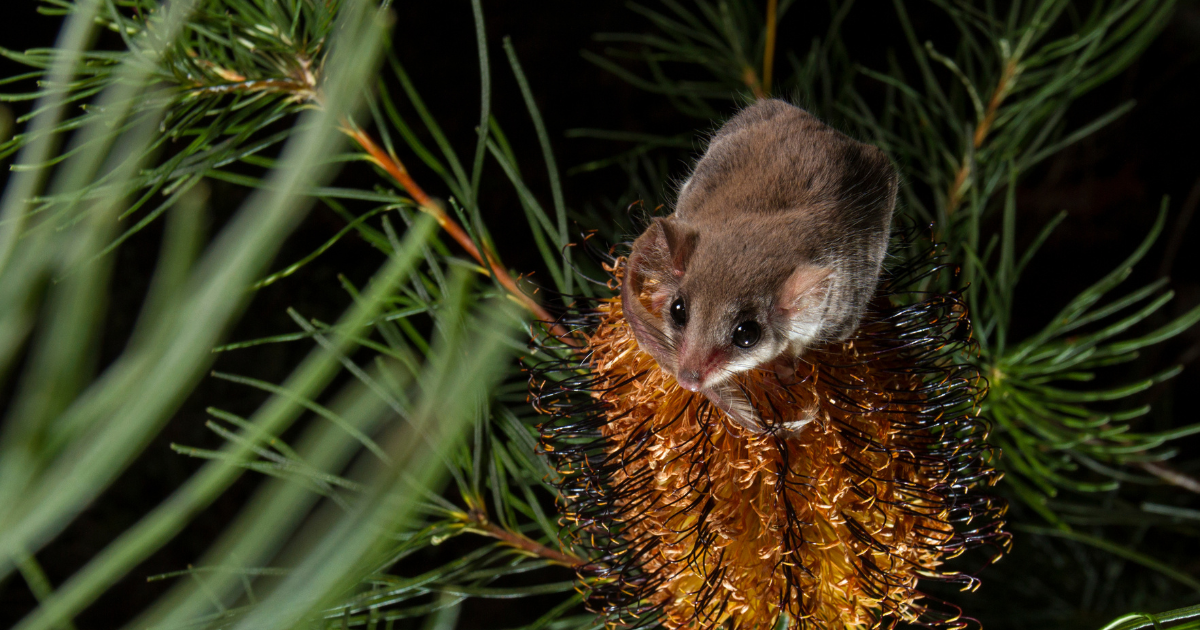
These gorgeous native animals are named for their remarkable flat tail with stiff fringed hair growing horizontally on either side to the tip. The tail is used to steer and brake as they glide through the trees.
They are the only known mammal to have a feather-like tail. The tail length is 7-8cm and shaped just like the feather on a bird.
The weight of an adult is 10-15 grams, so this tiny glider is often missed when in trouble or mistaken for a mouse when the cat brings it in, which is usually how WIRES become involved.
Feathertail gliders are from the Burramyidae family and are related to the Pygmy possum. A fascinating feature of these tiny mammals is that because they are so small, they have trouble staying warm when it is cold or when there is a food shortage; like the Sugar glider, they enter a state known as torpor.
This means that for short periods, their breathing slows down, and the animal becomes unresponsive; the body temperature drops almost to that of its surroundings. This state is not to be mistaken for hibernation, which is for much longer periods and is not known to occur in marsupials.
The fur is grey/brown above with a light cream to white abdomen. Like all gliders, they have a skin fold known as the gliding membrane; in Feathertail gliders, this membrane extends from the elbow to the knee. Fringed with long hair along the edge, the body surface is increased. When stretched out, the glider can float long distances, like a falling leaf. It is at home in the trees, feeding on insects, pollen and nectar. It launches into the air when it needs to get from one tree to the next.
To become airborne, they hurl themselves from the tree with legs outstretched, the flap of skin between front and back feet extending like a parachute. The flattened tail helps this tiny possum to glide, steer, brake and anchor itself on landing.
They often glide for 14 m but have been known to glide up to 28 m. They glide up to five times an hour. Gliding helps the Feathertail glider stay amongst the treetops, where they can avoid larger, ground-dwelling predators.
The feet resemble that of a frog except with fur, and the large pads on the toes, which have serrated groves underneath, allow them to climb just about anything. Many sweat glands creating moisture on the foot pads allow this tiny glider the surface tension like mini suction cups to climb even vertical panes of glass.
They are found throughout eastern Australia, from South Australia to far north Queensland.
These gliders will build their nests in anything from abandoned bird’s nests to banana bags and line the nest with leaves, feathers and shredded bark. The nest is spherical and about 6-8cm diameter. Usual nesting places include palms, stag horn and tree ferns.
They tend to live in communal groups of between 5 to 30 individuals, and the breeding cycle is all year round in the Northern parts and spring, summer to late winter in the South.
They have a life expectancy of 4 years in the wild. Both sexes are similar in size and appearance, with the obvious difference being the pouch in the female.
Download instructions on how to build a habitat box for a Feathertail glider.
To access 24/7 rescue advice and assistance for sick, injured and orphaned native animals call 1300 094 737, or fill in the online rescue form.
Sign Up for Wildlife News
Stay in touch and get our regular rescue stories, WIRES updates and a free copy of our 15 Ways to Help Wildlife ebook
